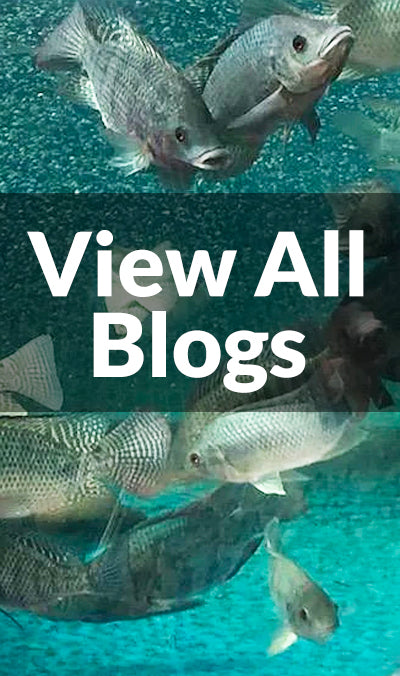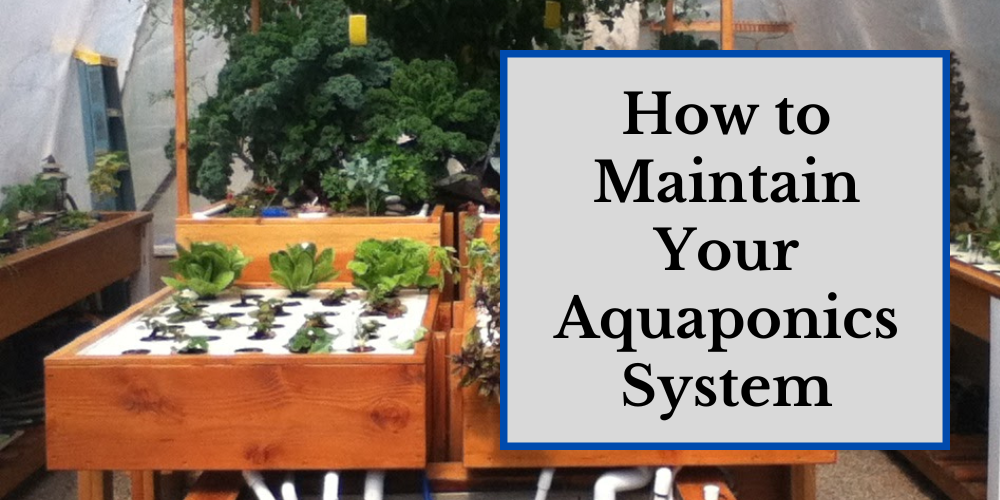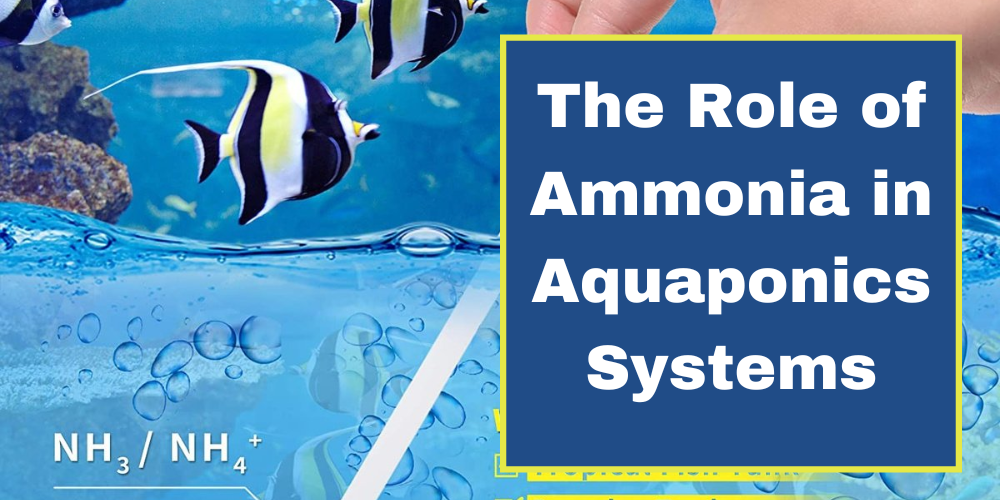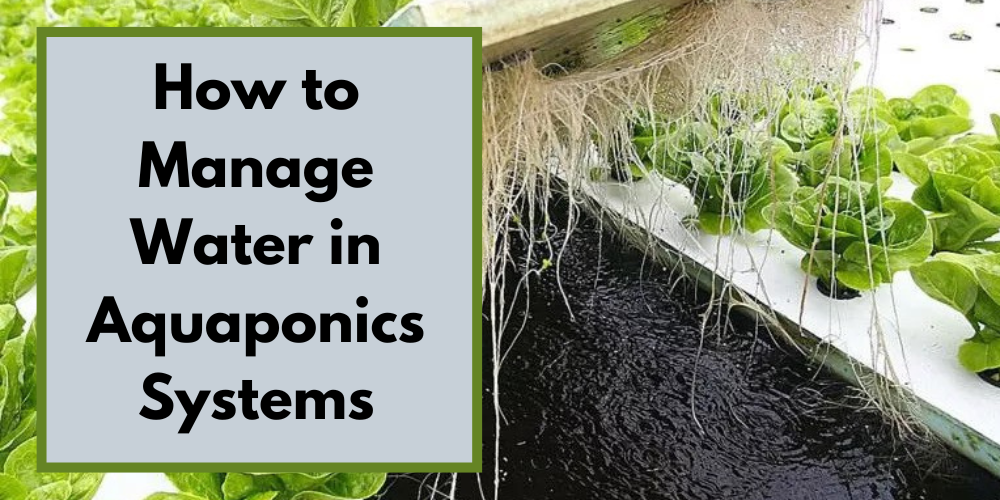If you’ve ever looked for a simple, sustainable way to enhance your aquaponics system’s efficiency, you’ve probably heard of duckweed. This tiny floating plant packs a big punch; it’s protein-rich, fast-growing, and acts like a natural biofilter, helping you maintain cleaner water and healthier fish.
Duckweed’s superpower lies in how quickly it grows. Under the right conditions, it can double its biomass every 2 to 3 days, making it one of the most efficient plants for nutrient uptake. In aquaponics, that means it helps absorb excess nitrogen and phosphorus, which improves water quality and reduces stress on your fish. Plus, it can be harvested and used as a natural fish feed, cutting down on feed costs, especially for tilapia, koi, or goldfish.
Beyond its practical benefits, duckweed also adds an educational and visual appeal to aquaponics systems, especially for classrooms and home setups. Watching it spread and thrive gives you instant feedback that your system is balanced and healthy.
If you’re new to aquaponics or want to master techniques like nutrient balancing, pH control, or fish feeding strategies, this guide is a great place to start. And when you’re ready to take your knowledge further,this 5-hour premium aquaponics video course walks you through everything from setup to optimization.
What Is Duckweed?
If you’ve ever seen a calm pond covered with tiny green leaves, you’ve already met duckweed, one of nature’s fastest-growing plants. Known scientifically as Lemna (and related genera like Wolffia and Spirodela), duckweed floats on the water’s surface, absorbing nutrients directly from the water below.
Duckweed is often called a “super plant” for aquaponics because of its unique combination of traits:
- Rapid growth rate:Under ideal conditions, duckweed can double its biomass in just 2–3 days.
- High protein content: Ranging from 35–45% protein, making it an excellent supplement to commercial fish feed.
- Efficient nutrient uptake: It removes ammonia, nitrates, and phosphates, helping to stabilize water chemistry.
- Simple care:It requires no soil, no special substrate, just water, nutrients, and sunlight.
-
Reproduction:Propagates vegetatively, meaning it clones itself rapidly without seeds.
Common Duckweed Species for Aquaponics
There are several duckweed species, but the following are most commonly used in aquaponics:
- Lemna minor:The most popular species, adaptable and easy to manage.
- Spirodela polyrhiza: Slightly larger leaves, good nutrient absorber.
- Wolffia arrhiza:Known as “watermeal,” the smallest flowering plant in the world, great for fish feed but harder to manage.
Each species thrives under slightly different conditions, but all serve the same roles, nutrient filtration and sustainable feed production.
Why Duckweed Fits Perfectly in Aquaponics
In aquaponics, duckweed serves two critical purposes:
- As a biofilter, it soaks up excess nutrients that could otherwise build up and stress fish or plants.
- As a fish feed supplement, it can replace 20–50% of commercial feed depending on your fish species and feeding strategy.
Because duckweed grows on the water surface, it also reduces evaporation and limits algae growth by shading the tank, keeping your water cooler and clearer.

Benefits of Growing Duckweed in Aquaponics
At first glance, duckweed might not look like much, just a tiny cluster of green leaves floating on the water’s surface. But in an aquaponics setup, this humble plant can make a huge difference. Duckweed is one of the most versatile and beneficial additions to an aquaponics system as it offers environmental, economic, and biological advantages that make your system more efficient and sustainable.
1. Natural Water Purifier
Duckweed acts as a biological filter that soaks up nutrients like ammonia, nitrates, and phosphates that come from fish waste. By absorbing them, duckweed helps:
- Maintain stable water quality
- Reduce toxic nitrogen buildup
- Lower stress and disease risk for fish
2. Sustainable Fish Feed Alternative
Duckweed is often called “green gold” for fish farmers. With up to 45% protein content, it’s a natural, renewable feed that can replace a portion of commercial pellets. Feeding duckweed to your fish can:
- Reduce feed costs by 20–50%
- Provide fresh, organic nutrition
- Promote faster growth and better color in species like tilapia, koi, and goldfish
Simply scoop some fresh duckweed from your grow area, rinse it, and offer it to your fish; they’ll eagerly consume it.
3. Improves System Stability
Because duckweed absorbs excess nutrients and reduces algae growth by shading the water surface, it creates a more stable aquatic environment. Less algae means:
- Clearer water
- Better oxygen balance
- Reduced maintenance time
A shaded water surface also helps moderate temperatures, keeping fish comfortable during hot weather, especially in outdoor systems.
4. Enhances Sustainability
Duckweed is self-replicating, it requires no soil, and grows rapidly using waste nutrients your system already produces. That makes it one of the most eco-friendly plants in aquaponics, converting waste into value. Every handful of duckweed you harvest represents:
- Cleaner water
- Healthier fish
- Free feed and fertilizer
5. Educational and Visual Appeal
If you’re setting up an aquaponics system for classroom learning or family projects, duckweed is a fantastic teaching tool. Students and even adults can visually observe how quickly it grows, how it cycles nutrients, and how it contributes to a balanced ecosystem.
It’s a small but powerful way to show how biology, ecology, and sustainability intersect.
How to Grow Duckweed in Your Aquaponics System
Duckweed might be one of the easiest plants to grow, but to get healthy, fast-growing mats that don’t overtake your system, it’s important to start right. Below is a beginner-friendly guide to help you grow and manage duckweed successfully in your aquaponics setup.
1. Choose the Right Duckweed Species
There are over a dozen duckweed species, but Lemna minor is the most common and beginner-friendly for aquaponics. It grows fast, adapts easily, and provides excellent nutrient removal and protein yield.
If you’re sourcing duckweed for the first time:
- Get it from a reliable aquaponics or aquarium supplier (not wild ponds, they can carry unwanted algae or snails).
- Quarantine new duckweed for 3–5 days in a separate container before using it in your system.
2. Prepare the Perfect Growing Environment
Duckweed thrives when conditions are right. Here’s a quick reference table you can use to maintain optimal conditions:
Condition |
Ideal Range |
Notes |
|
Temperature |
20–30°C (68–86°F) |
Grows fastest in warm, stable temperatures |
|
pH Level |
6.5–7.5 |
Neutral to slightly acidic is best |
|
Light |
10–16 hours/day |
Indirect sunlight or low-intensity grow light |
|
Water Depth |
5–20 cm (2–8 in) |
Shallow surface area works best |
|
Ammonia/Nitrate |
Moderate levels |
Needed for healthy growth |
|
Water Movement |
Gentle, slow flow |
Avoid strong currents — duckweed likes calm surfaces |
3. Start Small: Seeding Duckweed
When introducing duckweed:
- Add just enough to cover about 10–20% of the water surface.
- Allow it to acclimate and spread naturally.
- Within 5–7 days (in warm conditions), it should double in size.
4. Feed It Naturally
Duckweed doesn’t need fertilizer in an aquaponics setup because your fish already provide the nutrients it craves. But you can enhance its growth by:
- Ensuring steady water circulation so nutrients reach your duckweed area.
- Occasionally, skimming debris that blocks light or airflow.
If you notice yellowing or slow growth, it could be due to:
- Low nitrate levels
- Insufficient light
- Cold temperature
Correct those factors, and your duckweed should bounce back within days.
5. Maintain and Control Growth
Duckweed can spread fast, which is great for feed production, but can become an issue if left unchecked.
Follow this simple maintenance routine:
- Harvest regularly: Skim off excess duckweed once it covers about 70–80% of the water surface.
- Leave some behind: Always keep at least 20% so it can regrow.
- Check oxygen levels:Ensure parts of the surface remain open for gas exchange.
- Keep it clean:Remove dead or yellowed duckweed to prevent decay.
6. Troubleshooting Common Problems
Problem |
Cause |
Solution |
|
Duckweed turning yellow |
Low nutrients or poor light |
Feed fish more or move to a brighter spot |
|
Slow growth |
Cold temperature or too much current |
Keep water warm and reduce surface movement |
|
Overgrowth |
No regular harvesting |
Remove 30–50% weekly |
|
Sudden die-off |
Drastic pH or ammonia changes |
Stabilize pH and test water weekly |
7. Harvesting Duckweed
Harvesting duckweed is simple but should be done carefully to avoid clogging filters or removing too much biomass.
Here’s a basic method:
- Use a fine mesh net or sieve to skim duckweed from the water surface.
- Let it drain briefly to remove excess water.
- Rinse gently with clean system water.
- Feed fresh to fish, compost, or dry for storage.
Drying for later use:
- Spread duckweed thinly on a mesh tray.
- Air-dry in a shaded, well-ventilated spot for 24–48 hours.
- Store in an airtight container.
By following these steps, you’ll have a thriving duckweed culture that improves your aquaponics system’s water quality, sustainability, and cost-efficiency, all while giving your fish a nutritious treat.
Common Mistakes When Growing Duckweed
Even though duckweed is one of the easiest aquatic plants to grow, it’s not completely foolproof. Knowing what to watch out for can save you frustration and keep your aquaponics system healthy and balanced.
1. Letting the Water Get Too Dirty or Stagnant
Duckweed thrives in nutrient-rich water, but too much waste or poor circulation can cause issues. When the water gets murky or oxygen levels drop, the plant struggles to photosynthesize and may turn yellow or die.
Common signs: foul smell, slimy water, or duckweed turning brown.
How to fix it:
- Ensure gentle water movement using a small air stone or slow pump.
- Avoid adding fresh fish waste directly to your duckweed tank.
- Skim debris regularly to keep the surface clean.
2. Overcrowding the Surface
Duckweed spreads fast, sometimes too fast. If it covers the entire surface, light can’t reach lower layers, causing die-off and oxygen depletion.
How to prevent it:
- Harvest 30–50% weekly to maintain light penetration.
- Leave 10–20% open water for oxygen exchange.
- If you see the lower layer turning pale, it’s time to thin it out.
3. Exposing Duckweed to Harsh Sunlight or Extreme Temperatures
Duckweed prefers mild light and stable temperatures.
Too much direct sunlight or sudden temperature swings can stress or kill it.
Ideal range:
- Temperature: 20–30°C (68–86°F)
- Light: 10–14 hours of indirect sunlight or moderate LED light
4. Using Chlorinated or Hard Water
Tap water treated with chlorine or high mineral content can damage duckweed roots and stunt growth. Before adding new water to your system:
- Let tap water sit for 24–48 hours to let chlorine evaporate, or
- Use a dechlorinator or RO (reverse osmosis) water if available.
5. Starving the Duckweed (Lack of Nutrients)
Yes, you can actually underfeed duckweed. If you isolate it too far from your fish tank or don’t let nutrient-rich water flow through, it may run out of essential nitrogen and phosphorus.
How to fix it:
- Ensure a gentle nutrient exchange between your fish tank and duckweed bed.
- Add small amounts of fish effluent periodically if separated.
- Keep pH between 6.5 and 7.5 for optimal nutrient absorption.
6. Introducing Contaminants or Competing Algae
Algae can outcompete duckweed for nutrients and light if your water is too nutrient-heavy or exposed to excess sunlight.
Prevention steps:
- Shade the tank slightly to reduce light intensity.
- Skim algae manually before they multiply.
- Avoid overfeeding fish, excess food promotes algae blooms.
7. Ignoring Regular Maintenance
Duckweed might seem self-sustaining, but consistent observation keeps it productive long-term. A neglected duckweed tank can become anaerobic, odorous, or a mosquito breeding ground.
Maintenance checklist:
- Remove dead or yellow leaves weekly
- Harvest regularly
- Maintain light water flow
Check pH and temperature weekly
Frequently Asked Questions About Duckweed in Aquaponics
1. Is Duckweed Good for Aquaponics Systems?
Absolutely. Duckweed is one of the best plants to include in an aquaponics system.
It acts as a natural biofilter, absorbing excess nutrients from fish waste while also serving as a high-protein feed for your fish. It improves water quality, supports fish health, and promotes system sustainability.
2. Can Duckweed Replace Fish Feed Entirely?
Not entirely, and it’s important not to rely solely on duckweed for fish nutrition.
While duckweed can provide up to 45% protein, it doesn’t contain all the essential amino acids your fish need. It’s best used as a supplemental feed, replacing 20–50% of commercial pellets depending on your fish species.
3. How Fast Does Duckweed Grow in an Aquaponics System?
Under ideal conditions, duckweed can double its biomass in 2–3 days.
Growth rate depends on:
- Nutrient availability (especially nitrogen and phosphorus)
- Light exposure (10–14 hours daily)
- Water temperature (20–30°C or 68–86°F)
If your duckweed isn’t multiplying that quickly, it may indicate issues with water quality, pH, or light levels.
4. Why Is My Duckweed Turning Yellow or Dying?
Yellowing or dying duckweed is often a sign of nutrient deficiency, poor water flow, or too much sunlight. Check the following:
- pH between 6.5 and 7.5
- Gentle water circulation
- Indirect or filtered light
- Adequate nutrient flow from fish waste
5. How Do I Prevent Duckweed from Overgrowing?
Duckweed grows extremely fast, so regular harvesting is essential.
Harvest 30–50% every few days, ensuring at least 20% of the surface remains open for oxygen exchange. You can use the harvested duckweed for:
- Fish feed
- Compost or fertilizer
- Starting a secondary duckweed tank
6. Can Duckweed Be Used in Both Indoor and Outdoor Aquaponics?
Yes, duckweed thrives in both environments.
- Indoors:Use grow lights or indirect sunlight, and ensure water temperature stays stable.
- Outdoors:Provide partial shade to prevent overheating and algae blooms.
Many growers keep a small indoor backup culture in case outdoor duckweed gets damaged by rain or pests.
7. What Type of Fish Eat Duckweed?
Most herbivorous or omnivorous fish enjoy duckweed, including:
Predatory species like trout or bass may ignore it. Always introduce duckweed gradually and observe feeding behavior.
Conclusion
Duckweed might be small, but in an aquaponics system, it plays a big role in efficiency, sustainability, and balance. From reducing feed costs to improving water quality, this humble floating plant offers benefits that both beginners and seasoned growers can appreciate.
By understanding how to grow, harvest, and use duckweed, you’ve already taken a step toward creating a more self-sustaining, eco-friendly aquaponics system. Whether you’re raising tilapia, koi, or catfish, or just experimenting with small-scale setups, duckweed helps you keep your system thriving with minimal effort and maximum return.
But here’s the truth:
Duckweed is just one piece of a much larger aquaponics puzzle, a puzzle that includes water chemistry, fish care, plant selection, and system design. Getting these elements right can make the difference between a struggling setup and a thriving ecosystem that produces consistent harvests.
Ready to take your aquaponics skills to the next level?
 This 5-hour premium Aquaponics Video Course is designed to help you go beyond the basics. You’ll learn how to design, build, and maintain a system that produces healthy fish and plants.
This 5-hour premium Aquaponics Video Course is designed to help you go beyond the basics. You’ll learn how to design, build, and maintain a system that produces healthy fish and plants.
Start Learning Today, and transform your aquaponics results.
Duckweed is nature’s way of showing that small things can have a massive impact. When integrated wisely, it can reduce waste, boost system health, and save money, while teaching you how to work with nature, not against it.
So start your duckweed journey today and let your aquaponics system show you just how powerful, simple, and sustainable growing can be.








Jill Symes
August 17, 2024
Thanks for the info. I thought Duckweed was just a nuisance but now I have it growing in my fish free filter pond. The koi and goldfish enjoy it when I hose it over the waterfall and into my main pond. I’ll keep doing that now I’ve read all about it.